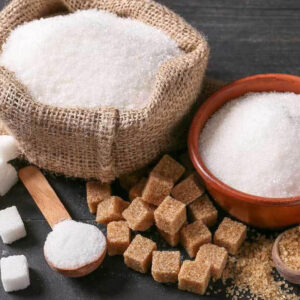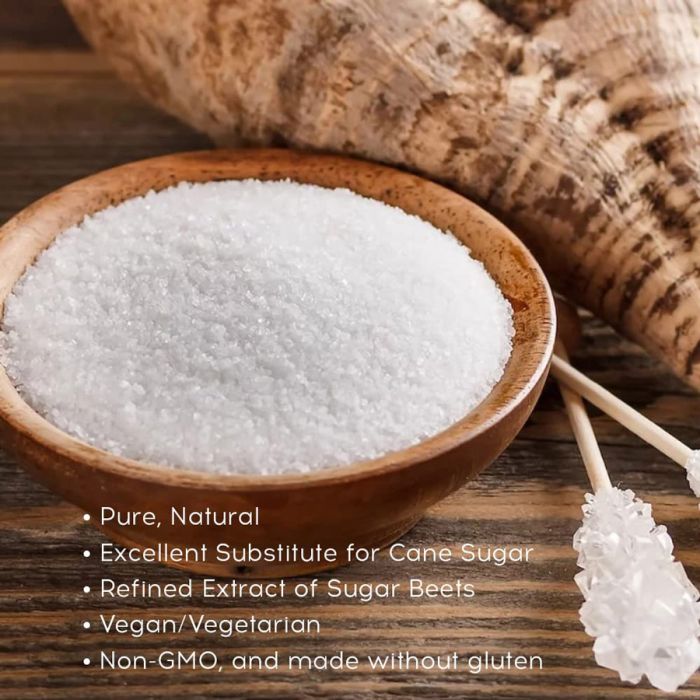Some people prefer beet sugar vs cane sugar for its believed health benefits and minimal processing.
Exploring the Distinctions in operation and Advantages Between Beet Sugar Vs Cane Sugar
In the cooking world, the option between beet sugar and cane sugar is not simply about sweetness yet includes a nuanced factor to consider of flavor, application, and effect. While both sugars stem from various plants, each undertakes unique production processes that subtly influence their characteristics and suitability for various meals.
Origins and Manufacturing Procedures of Beet and Cane Sugar

Walking cane sugar, on the various other hand, originates from the sugarcane plant, an exotic yard indigenous to Southeast Asia now cultivated in tropical zones worldwide. The production of cane sugar begins with the harvesting of cane stalks, which are squashed to launch the juice. This juice is after that steamed to focus it, after which it is spun in centrifuges to create raw sugar crystals. These crystals are additional fine-tuned to produce the white sugar typically offered in stores.

Nutritional Content and Health Considerations

When comparing the nutritional material of beet sugar and cane sugar, it becomes apparent that both types essentially give the very same calorie values, with around 16 calories per tsp and no considerable nutrient diversity. Each is made up nearly completely of sucrose, which is a basic carbohydrate that offers fast energy but lacks vitamins, minerals, or fiber. This resemblance reaches their impact on health, specifically worrying blood glucose degrees. Both sugars, when eaten in excess, can add to elevated blood sugar levels, a risk factor for diabetes mellitus and various other metabolic disorders. Moreover, extreme intake can bring about weight gain and dental troubles, as both sugars are similarly cariogenic, advertising dental cavity. From a wellness point of view, regulating consumption of any kind of sugar, whether from beet or cane, is recommended to stay clear of these prospective adverse effects on health. Therefore, neither holds an unique here advantage over the various other in regards to health advantages.
Flavor Profiles and Culinary Applications
Regardless of their similar chemical structures, beet sugar and cane sugar differ subtly in flavor, which can influence their usage in various culinary contexts. Walking stick sugar usually brings a hint of molasses, even in its refined form, lending a warm, caramel-like undertone that boosts baked items, coffee, and chocolate-based dishes. This slight molasses flavor is specifically valued in the baking market for adding deepness to sweets and pastries. On the other hand, beet sugar is defined by its very improved, neutral taste, making it a functional sweetener that does not alter the flavor accounts of Get the facts dishes. This nonpartisanship is especially helpful in fragile recipes, such as light breads, creams, and some sauces, where the fundamental tastes of other active ingredients are meant to attract attention. As a result, chefs and food producers might choose one sort of sugar over the various other based upon the preferred taste result of their culinary creations.
Environmental Effect and Sustainability
While both beet and cane sugars are originated from plants, their ecological impacts differ significantly because of the distinctive techniques of farming and processing required for each and every. Sugar beet cultivation typically entails comprehensive automation, which can raise nonrenewable fuel source intake and carbon discharges. Beetroots can be grown in cooler climates and need much less watering, possibly reducing water usage compared to sugarcane. Sugarcane, on the other hand, is normally grown in exotic areas where it counts greatly on watering and a much longer growing duration, increasing its water footprint.
Additionally, the processing of sugarcane frequently produces a significant amount of waste, consisting of bagasse, which, although useful as biofuel, regularly adds to air contamination if shed inefficiently. Sugar beet handling utilizes more of the raw products, causing much less waste. Both markets deal with challenges in reducing their ecological impacts, yet recurring technologies in farming practices and waste monitoring are intending to enhance sustainability.
Economic Elements Influencing the Sugar Market
The economic dynamics of the sugar market are dramatically affected by worldwide market needs and profession policies. In areas where sugarcane or sugar beet manufacturing is subsidized, manufacturers might have a financial advantage that enables them to supply reduced rates on the global market.
Additionally, changes in worldwide demand for sugar, influenced by dietary patterns and industrial use in food products, directly impact prices and manufacturing degrees. beet sugar vs read this article cane sugar. Weather additionally play a crucial duty, as they can significantly influence plant returns and, subsequently, the supply chain. This irregularity presents a level of economic uncertainty that can lead to financial investment volatility in sugar manufacturing markets, influencing decisions from planting to market technique
Conclusion
In verdict, both beet and cane sugar have special qualities that fit different culinary demands. While cane sugar imparts an abundant flavor ideal for improving baked goods, beet sugar's nonpartisanship is perfect for lighter meals.